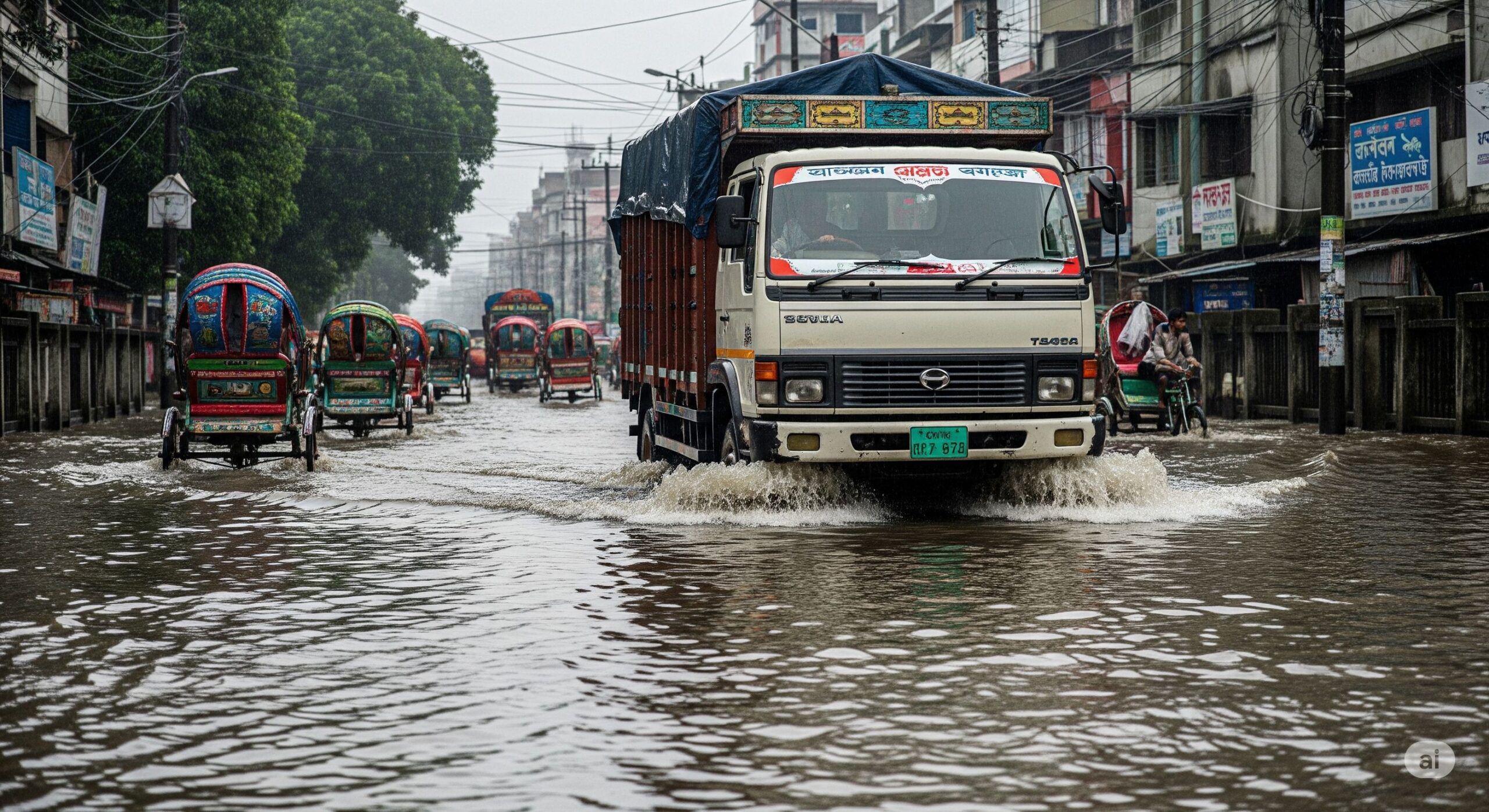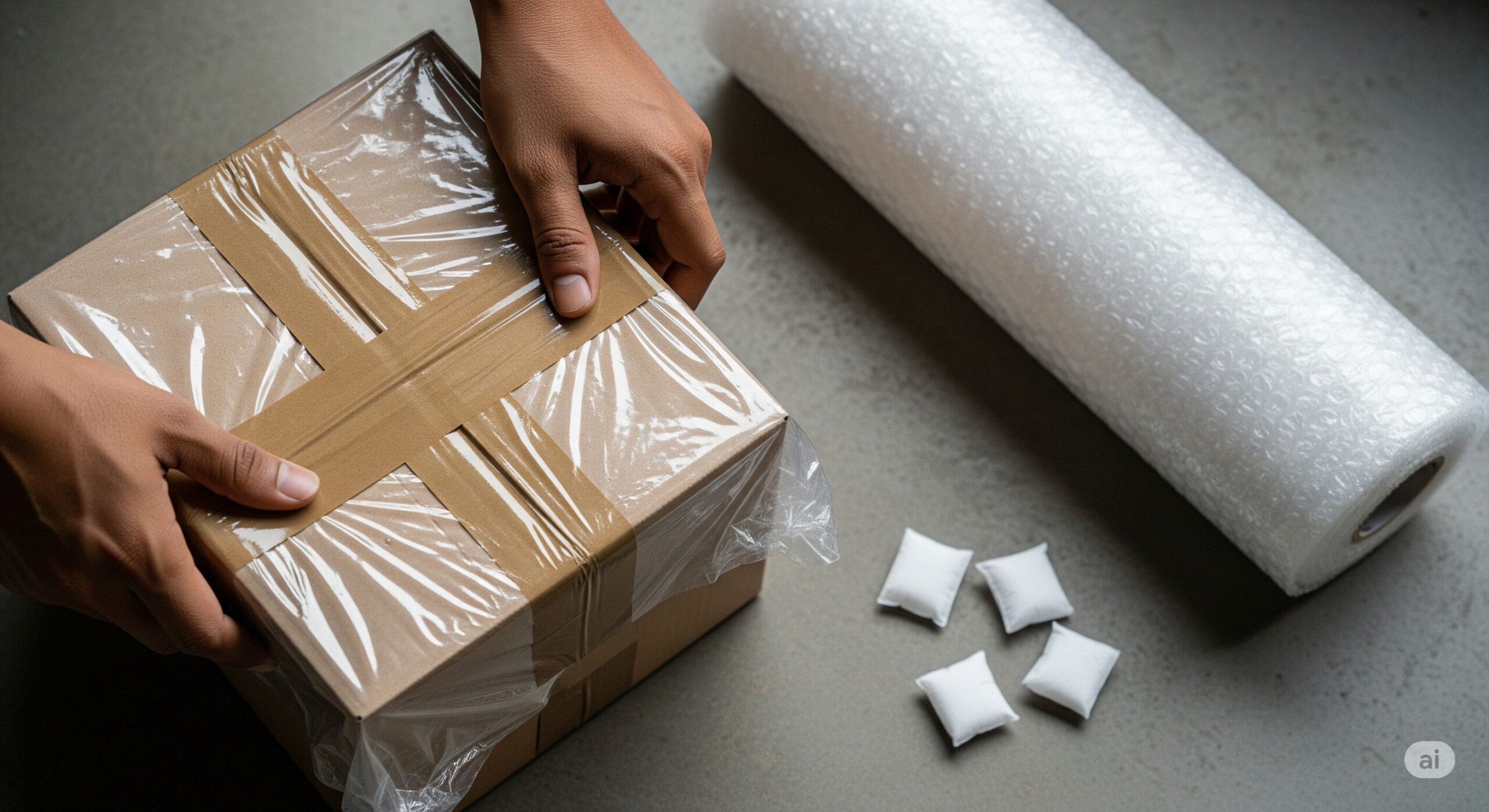Last monsoon season, my neighbor Rashid learned the hard way why timing matters when moving in Dhaka. His family’s relocation turned into a nightmare when unexpected flooding destroyed half their belongings. Watching him frantically trying to save water-soaked furniture from his truck made me realize how unprepared most of us are for monsoon moving challenges.
If you’re planning to move during Dhaka’s monsoon season, you’re not alone. Nearly 30% of relocations in Bangladesh happen during the rainy months due to job transfers, lease renewals, and family circumstances. The good news? With proper planning and the right strategies, you can protect your belongings and ensure a smooth transition even when the skies open up.
Why Monsoon Moving in Dhaka Needs Special Planning
Dhaka’s monsoon season typically runs from June through October, but don’t let those neat calendar dates fool you. The weather here has a mind of its own. One minute you’re enjoying clear skies, the next you’re dealing with torrential downpours that can dump 200mm of rain in a single day.
The city’s unique geography makes monsoon moving particularly challenging. Areas like Dhanmondi, Uttara, and parts of Old Dhaka are notorious for waterlogging. During peak monsoon months, these neighborhoods can become mini-lakes within hours. For families planning relocations, this means your carefully planned moving day could turn into a disaster if you’re not prepared.
What makes Dhaka’s monsoon season especially tricky is the unpredictability. Unlike other cities where you might get consistent rain patterns, Dhaka weather can shift dramatically. Morning sunshine can give way to afternoon storms that flood streets and make transportation nearly impossible.
Pre-Move Preparation: 6 Weeks Before Monsoon Season
Successful monsoon moving starts with preparation at least 4-6 weeks before your planned move date. This isn’t just about checking weather forecasts – it’s about creating a comprehensive strategy that accounts for every possible scenario.
Start by identifying your moving window. Monitor weather patterns using reliable apps like BMD Weather or AccuWeather, but remember that forecasts beyond 5-7 days are often unreliable during monsoon season. Instead of fixing a single date, give yourself a 2-3 week window for flexibility.
Create a backup plan for every aspect of your move. This includes having alternative routes mapped out, keeping extra packing materials on hand, and maintaining contact with multiple moving companies. The key is redundancy – if one plan fails, you should have two more ready to go.
Waterproof Packing Methods for Rainy Season Moving
The difference between a successful monsoon move and a disaster often comes down to how well you’ve protected your belongings from moisture. Standard cardboard boxes are your enemy during monsoon season – they’ll disintegrate faster than you can say “heavy rainfall.”
Electronics Protection Strategy: Wrap all electronics in multiple layers of plastic wrap, then place them in sealed plastic bags with silica gel packets. For larger items like televisions or refrigerators, use waterproof covers and ensure all ventilation areas are sealed. Don’t forget to take photos of wire connections before disconnecting anything – you’ll thank yourself later.
Clothing and Fabric Protection: Vacuum-sealed bags are your best friend for clothes, bedding, and curtains. They not only protect against moisture but also save space. For items that can’t be vacuum-sealed, use heavy-duty garbage bags with tight seals, and consider double-bagging important items.
Document and Paper Protection: Scan all important documents and store digital copies in cloud storage before packing. For physical documents, use waterproof document holders or seal them in ziplock bags. Consider keeping a small waterproof container with copies of essential documents (passport, lease agreements, insurance papers) that you can grab quickly if needed.
Furniture and Large Items: Wrap furniture in plastic sheeting, paying special attention to joints and hardware where water might seep in. For wooden furniture, consider using furniture blankets under the plastic wrap for extra protection. Remove drawers and pack them separately when possible – they’re easier to protect and transport.
Best Moving Days During Monsoon Season in Bangladesh
Experienced Dhaka movers know that successful monsoon relocations require more than just checking the weather app. You need to understand local patterns and signs that indicate approaching storms.
The best moving windows are typically early morning (6-10 AM) before afternoon heat builds up storm clouds, or late evening after storms have passed. Avoid midday moves during monsoon season unless you’re absolutely certain about weather conditions.
Watch for these warning signs of incoming storms: rapidly building cumulus clouds, sudden temperature drops, increasing humidity, and changes in wind patterns. Local birds often know before the weather apps do – if you notice unusual bird behavior or sudden silence, storms might be approaching.
Monsoon Transport Solutions: Trucks and Route Planning
Not all moving trucks are created equal when it comes to monsoon protection. When hiring movers, specifically ask about their monsoon-ready vehicles.
Look for trucks with:
- Waterproof tarps and covers
- Sealed cargo areas
- Elevated loading platforms
- GPS tracking for route optimization
Route Planning for Flood-Prone Areas: Work with your moving company to identify alternative routes that avoid known flooding zones. Areas around Ramna Park, parts of Dhanmondi Lake Road, and sections of Airport Road are particularly vulnerable. Having 2-3 alternative routes planned can save hours of delays.
Vehicle Protection Measures: If you’re handling the move yourself, ensure your vehicle is monsoon-ready. Check tire treads, ensure wipers are working properly, and keep emergency supplies including rope, flashlights, and basic tools. Consider renting a larger vehicle than you think you need – you’ll want extra space for protective materials and emergency supplies.
What to Do When Heavy Rain Starts During Your Move
Even with perfect planning, Dhaka’s weather can surprise you. Having clear emergency protocols can mean the difference between minor delays and major disasters.
Immediate Response to Sudden Storms: If caught in unexpected heavy rain, prioritize protecting electronics and documents first. Move these items to the driest, most secure location available. If you’re mid-move when storms hit, focus on getting essential items to safety rather than trying to move everything.
Communication Strategies: Maintain contact with your moving team through WhatsApp groups or similar platforms. Share real-time updates about weather conditions, traffic situations, and any changes to plans. Ensure all team members have backup contact methods in case cell towers are affected.
Damage Control Measures: If water damage occurs, act quickly. Remove affected items from wet areas immediately, separate wet items from dry ones, and begin drying processes as soon as possible. Document any damage with photos for insurance purposes.
After Moving: Humidity Control and Unpacking Tips
Once you’ve successfully relocated, the job isn’t over. Dhaka’s high humidity during monsoon season means proper moisture management in your new home is crucial for preventing mold and protecting your belongings.
Immediate Unpacking Priorities: Unpack moisture-sensitive items first – electronics, documents, and clothing. Set up dehumidifiers or fans in areas where you’re unpacking to promote air circulation. Don’t rush to unpack everything at once; focus on items that are most vulnerable to humidity damage.
Humidity Control Strategies: Invest in good dehumidifiers for your new home, especially for storage areas and bedrooms. Use moisture-absorbing products like activated charcoal or commercial moisture absorbers in closets and storage spaces. Ensure proper ventilation in bathrooms and kitchens where humidity naturally accumulates.
Monsoon Moving Costs: Budget Planning for Rainy Season
Monsoon moving often comes with additional costs that many families don’t anticipate. Planning for these expenses upfront can prevent budget surprises.
Additional Expenses to Expect:
- Waterproof packing materials (15-20% more than standard supplies)
- Potential storage costs if moves are delayed
- Additional insurance coverage for weather-related damage
- Emergency supply costs (tarps, rope, cleaning supplies)
- Possible premium charges from moving companies during peak monsoon months
Money-Saving Tips: Buy packing materials in bulk before monsoon season when prices are lower. Consider partnering with neighbors or friends who are also planning moves to share costs for materials and moving services. Some established moving companies offer discounts for flexible scheduling – being willing to move on short notice when weather permits can save money. Companies with decades of experience in Bangladesh often provide better value during monsoon season because their expertise prevents costly mistakes and damage.
Professional Movers Share Monsoon Moving Secrets
Dhaka’s experienced movers have developed techniques specifically for monsoon challenges. Here’s what they’ve learned through years of wet-weather relocations:
Professional Best Practices: “We always pack an extra day’s worth of supplies,” explains Rahman, who’s been moving families in Dhaka for over 15 years. “Weather can change plans quickly, and being prepared means the difference between a successful move and a disaster.”
“The key is understanding that monsoon moving isn’t just about waterproofing,” adds Karim from Dhaka Movers, reflecting on decades of experience handling Bangladesh relocations. “It’s about having flexible systems and backup plans. We’ve learned that customer satisfaction during monsoon season comes from over-preparation, not just hoping for good weather.”
Local movers emphasize the importance of staging areas – covered spaces where items can be temporarily stored if weather becomes problematic. They also recommend keeping essential items (medications, important documents, basic toiletries) in a separate, easily accessible waterproof container.
Industry Insights: Professional movers in Dhaka typically charge 10-15% more during monsoon season due to additional risks and preparation requirements. However, established companies like Dhaka Movers, who have been operating for decades, often offer guarantees against weather-related damage when you use their waterproof packing services. Their experience with Bangladesh’s unpredictable weather patterns means they’ve developed specific protocols for monsoon relocations.
Monsoon Moving Checklist: Week-by-Week Timeline
6 Weeks Before:
- Research moving companies with monsoon experience and decades of operation in Bangladesh
- Begin gathering waterproof packing materials
- Start decluttering to minimize items to move
- Look for companies that offer customizable packages for different budgets
4 Weeks Before:
- Finalize moving company selection
- Create backup date options
- Begin weather monitoring
2 Weeks Before:
- Confirm all logistics with moving company
- Prepare emergency supplies
- Waterproof pack non-essential items
1 Week Before:
- Monitor weather forecasts closely
- Prepare quick-access emergency kit
- Confirm backup plans with moving team
Moving Day:
- Check weather conditions first thing
- Keep emergency supplies accessible
- Maintain constant communication with moving team
Common Questions About Monsoon Moving in Dhaka
Q: Should I postpone my move if rain is forecasted? A: Light to moderate rain doesn’t necessarily mean postponement, but heavy rainfall or storm warnings should trigger your backup plan. Work with your moving company to assess conditions and make informed decisions.
Q: How much extra should I budget for monsoon moving? A: Plan for 20-30% additional costs for waterproof materials, potential storage, and emergency supplies. This might seem high, but it’s far less than replacing water-damaged belongings.
Q: Are there specific areas in Dhaka I should avoid moving to during monsoon season? A: While you can’t control where you need to move, be extra cautious with ground-floor apartments in areas known for flooding. Uttara, parts of Dhanmondi, and areas near the Buriganga River are particularly vulnerable.
Q: What should I do if my belongings get wet during the move? A: Act immediately. Separate wet items from dry ones, document damage with photos, and begin drying processes. Contact your moving company and insurance provider as soon as possible.
Q: How do I choose the right moving company for monsoon season? A: Look for companies with extensive experience in Bangladesh’s climate conditions. Established movers who’ve been operating for decades understand local weather patterns and have developed specific protocols for monsoon relocations. Ask about their waterproof packing services, backup plans, and whether they offer flexible packages to suit different budgets and needs.
Make Your Monsoon Move Success Story
Moving during Dhaka’s monsoon season doesn’t have to be a nightmare. With proper preparation, the right materials, and flexible planning, you can successfully relocate even when the weather isn’t cooperating. The key is respecting the weather while not letting it control your life.
Remember Rashid, my neighbor from the opening story? He learned from his monsoon moving disaster and successfully helped his brother relocate the following year during peak monsoon season. With waterproof packing, flexible scheduling, and a solid backup plan, what could have been another disaster became a smooth transition.
Your monsoon move can be successful too. Start planning early, invest in proper protection, and remember that sometimes the best moving weather is just after a storm passes – when the air is clean, temperatures are cooler, and you have a clear window before the next system arrives.
The monsoon season is part of life in Dhaka. Instead of fighting it, work with it. Your belongings – and your stress levels – will thank you for the preparation.



